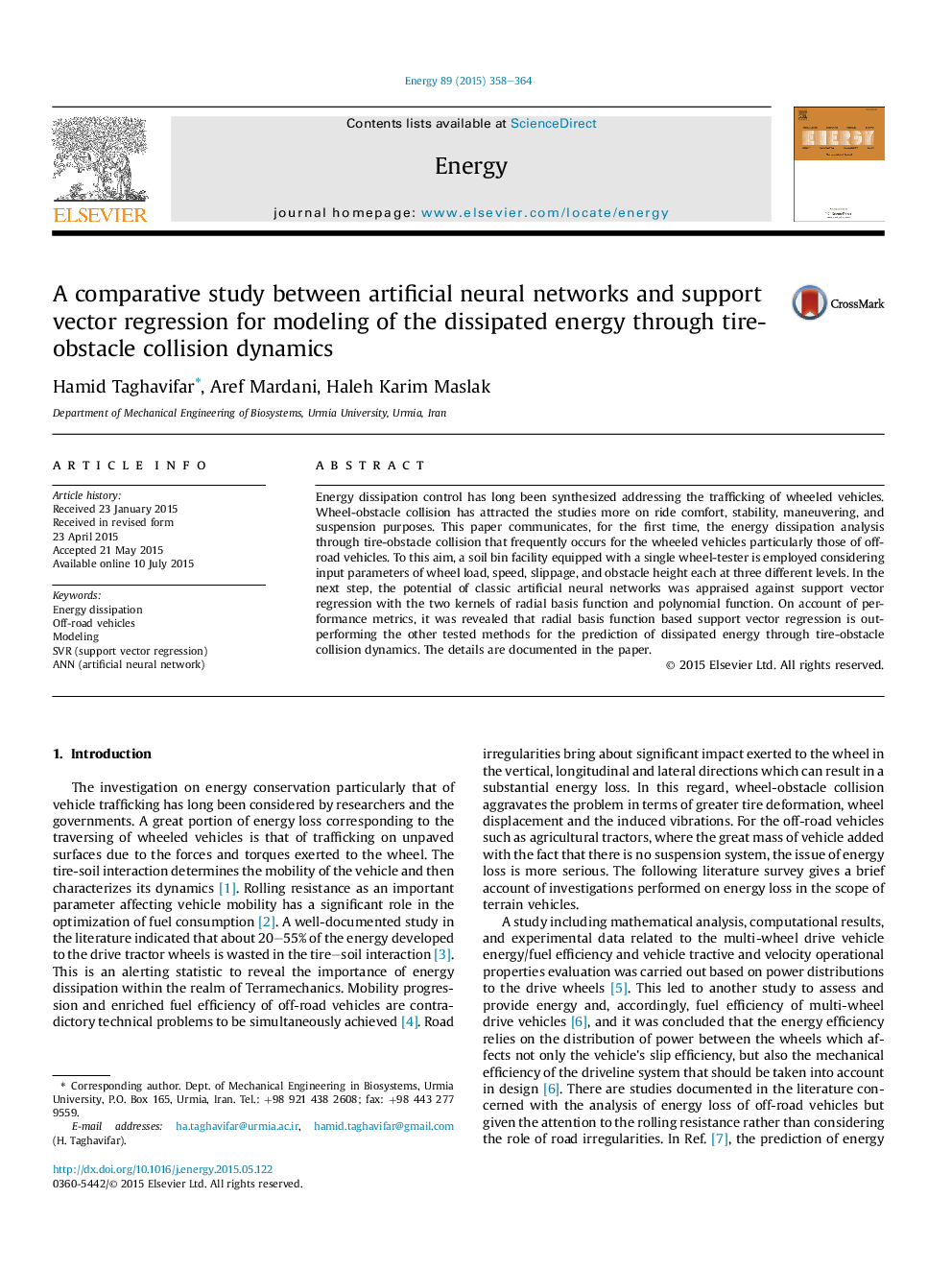| کد مقاله | کد نشریه | سال انتشار | مقاله انگلیسی | نسخه تمام متن |
|---|---|---|---|---|
| 1731913 | 1521457 | 2015 | 7 صفحه PDF | دانلود رایگان |
• Artificial neural network and support vector regression were synthesized to predict energy dissipation.
• The controlled condition of a soil bin facility with a single wheel-tester was used.
• Effect of wheel load, speed, tire slippage, obstacle height and obstacle geometry were ascertained.
Energy dissipation control has long been synthesized addressing the trafficking of wheeled vehicles. Wheel-obstacle collision has attracted the studies more on ride comfort, stability, maneuvering, and suspension purposes. This paper communicates, for the first time, the energy dissipation analysis through tire-obstacle collision that frequently occurs for the wheeled vehicles particularly those of off-road vehicles. To this aim, a soil bin facility equipped with a single wheel-tester is employed considering input parameters of wheel load, speed, slippage, and obstacle height each at three different levels. In the next step, the potential of classic artificial neural networks was appraised against support vector regression with the two kernels of radial basis function and polynomial function. On account of performance metrics, it was revealed that radial basis function based support vector regression is outperforming the other tested methods for the prediction of dissipated energy through tire-obstacle collision dynamics. The details are documented in the paper.
Journal: Energy - Volume 89, September 2015, Pages 358–364
